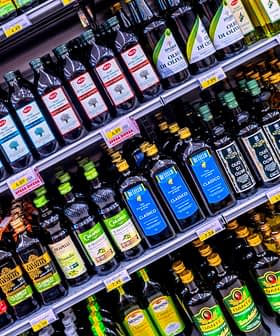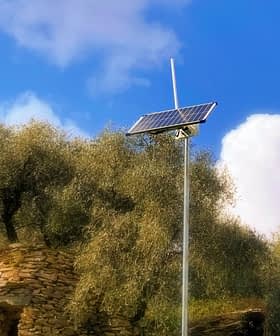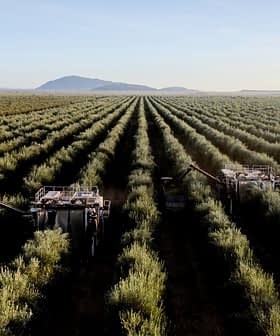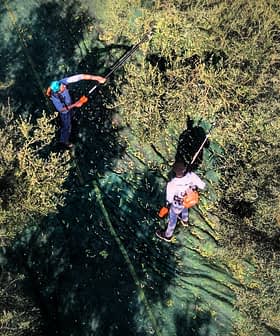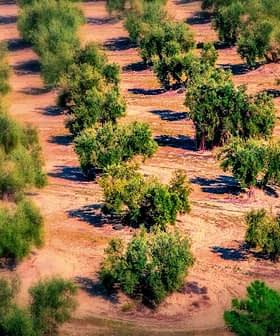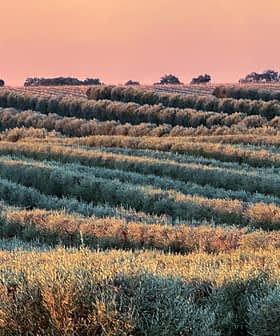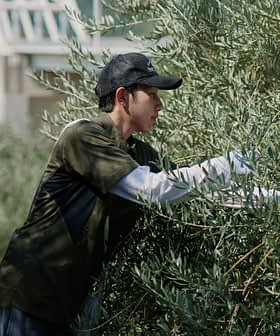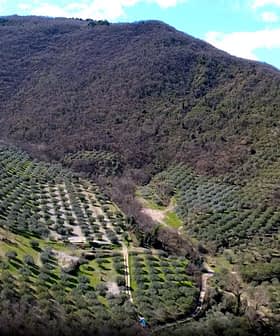Despite Costs, Italian Olive Farmers Continue Organic Transition
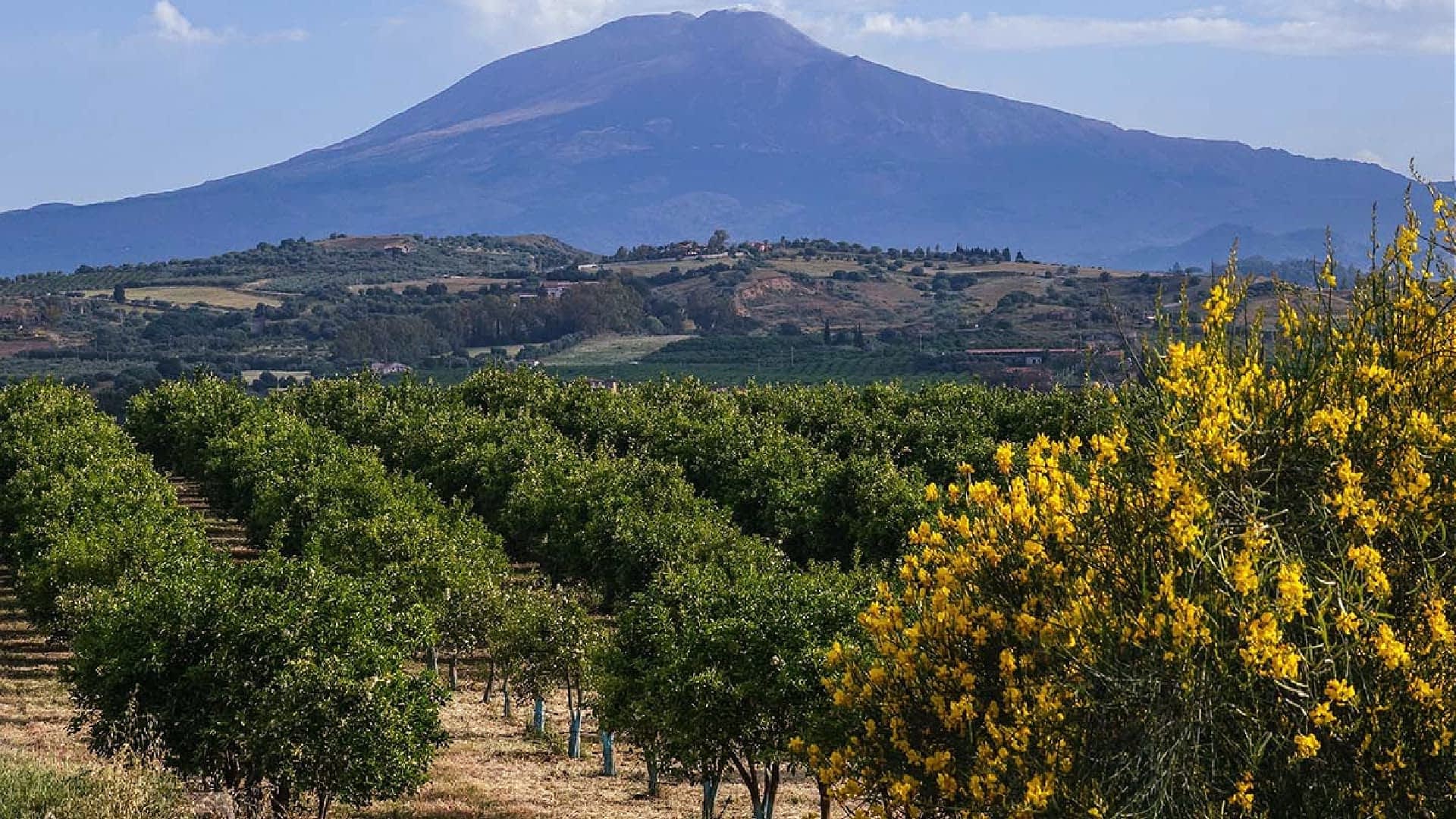
Italy has seen a significant increase in the area of olive groves cultivated using organic farming practices, now covering nearly 280,000 hectares. The demand for organic olive oil is rising both domestically and internationally, with producers facing challenges such as high production costs and the need for organic certification to meet market demands. Despite the costs and bureaucratic hurdles, organic olive oil producers in Italy are finding success by targeting foreign markets and offering unique, high-quality products.
Nearly 280,000 hectares of olive groves in Italy are now cultivated using organic farming practices, compared to approximately 170,000 hectares a decade ago.
According to 2023 data compiled by the Italian Institute of Services for the Agricultural Food Market (ISMEA), organic olive groves represent a significant portion of Italy’s organic farming area.
Converting nearly half of our production to organic olive farming had a definite commercial impact. One key factor is that producing organic olive oil is costly.
They are comparable to meadows and pastures (729,000 hectares), animal forage crops (481,000 hectares), and cereals (356,000 hectares), far exceeding organic vineyards (133,000 hectares).
Approximately 20 percent of Italy’s agricultural land is organically farmed, covering more than 2.4 million hectares.
See Also:Global Organic Farmland Continues Steady ExpansionThe demand for organic olive oil is increasing in Italy and internationally. Many Italian organic extra virgin olive oil producers find their most loyal customers abroad.
“I sell my extra virgin olive oil at €16 per liter, and it all comes from organically certified agriculture,” Giuseppe Mazzone, the owner of the Sicilian producer Pozzo di Gaspare, told Olive Oil Times.
“I used to sell my extra virgin olive oil locally, but Sicilian consumers are often reluctant to pay higher prices for premium quality,” he added. “Many still seek €8 olive oils. As a result, I shifted to foreign markets, which now account for more than 50 percent of my total sales.”
In local markets, organic and high-quality conventional extra virgin olive oil producers are often sidelined by large retailers’ aggressive pricing strategies.
Many of these general food outlets use extra virgin olive oil as a loss leader, selling it at below-market prices to attract more customers.
“While we have a minimum price of €9 per liter, I have seen supermarkets selling extra virgin olive oil for as little as €4 or €5,” Mazzone noted.
In the United States, organic olive oil sales are rising, while conventional product sales appear to be stagnating.
Globally, many high-quality olive oil producers are transitioning to organic farming, either partially or entirely.
At the 2024 NYIOOC World Olive Oil Competition, nearly one-third of all entries were organic, a figure that continues to grow each year.
In Italy, certified organic extra virgin olive oil consistently commands a higher price than conventional olive oil. In Bari, Puglia’s key olive oil market, organic extra virgin olive oil typically costs five to six percent more than its conventional counterpart.
“Converting nearly half of our production to organic olive farming had a definite commercial impact. One key factor is that producing organic olive oil is costly,” said Pietro Re, the chief executive of the award-winning Tamía.
While producing high-quality extra virgin olive oil is also inherently expensive, he added that there are several notable differences.
“To illustrate, consider pest management. Organic methods are not always sufficient to ensure flawless fruit at harvest time,” Re said. “High-quality olive oil starts with healthy, unblemished fruit. It’s impossible to produce a premium product from olives that are already compromised.”
As a result, organic producers often opt for an early harvest, sometimes exceptionally early in the season.
This helps prevent infestations by the olive fruit fly, which can severely damage the crop. However, this practice significantly reduces yields during milling.
“With conventional farming techniques and our expertise, we can allow the olives to reach the next ripening stage,” Re said.
“This isn’t the stage of an unripe, green olive but rather when the fruit reaches optimal coloration,” he added. “At that point, the olives develop the ideal flavor and aroma while yielding a higher oil output. The specific timing varies by olive variety.”
The total area of Italian farmland dedicated to olive cultivation has remained stable for years at approximately one million hectares.
Most newly certified organic olive groves result from converting conventional farms to organic methods.
This transition follows stringent regulations set by the European Union and local authorities.
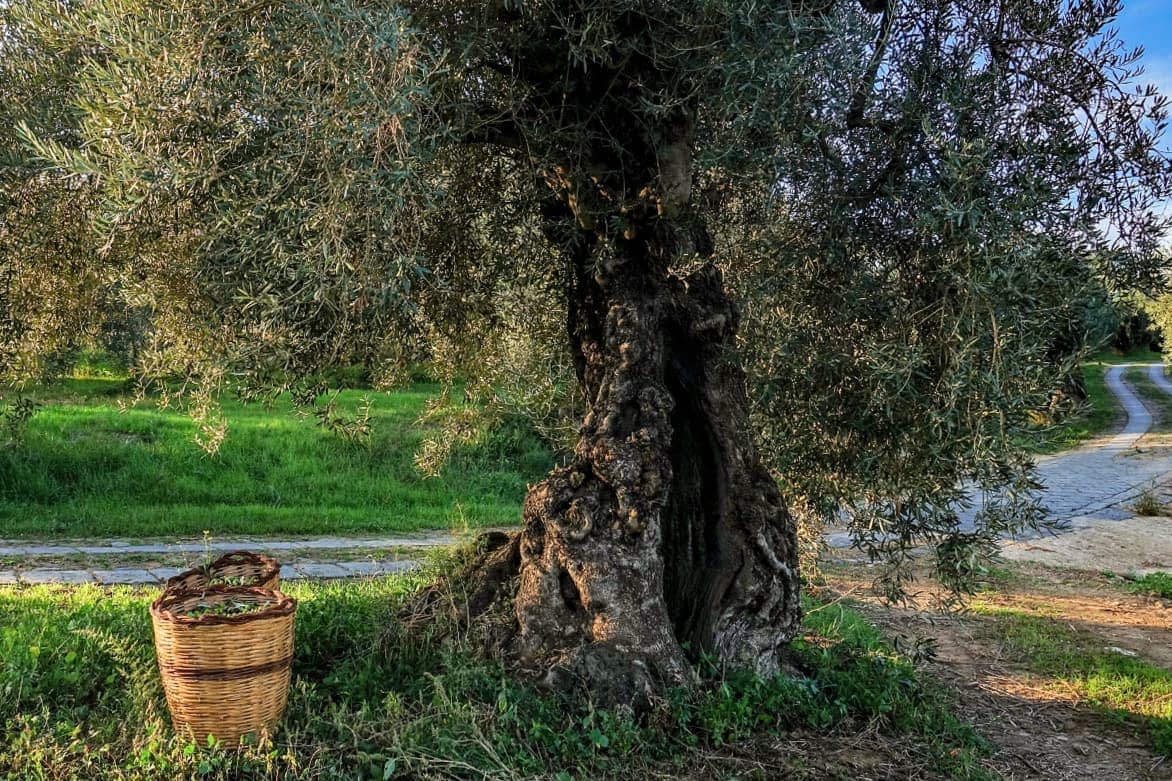
Mazzone said he would not have been able to convert his olive trees to organic cultivation without E.U. support. (Photo: Pozzo di Gaspare)
Certification must be renewed annually, and the conversion process requires a continuous three-year period of strictly following organic farming practices.
Only after this period ends and all criteria are met, including dedicated storage containers, can certification be officially granted by entities authorized by the Ministry of Agriculture, Food Sovereignty and Forests.
Regular and thorough inspections are conducted. “Today, there are more frequent and in-depth checks on production than in the past,” Re said.
These inspections may include verifying company records and sampling leaves, soil and olive oil on-site. Authorities also monitor production volumes.
The organic labels on saleable containers must also receive specific approval from ministry delegates before bottling.
“Obtaining and maintaining organic certification for olive farming is not as simple as one might think. It’s quite a complex process,” Mazzone said.
Pozzo di Gaspare is one of the farms that pursued organic certification for its trees. Work is also being done to certify the resulting olive oil production as organic.
“When the certifier comes here, the procedure requires at least a whole morning and the involvement of our agronomist, Mazzone said. The process also involves filling out questionnaires and surveys and answering other questions.
“Then you need to get an Agricultural Assistance Center involved, because this application follows a specific process, as organic certification is also included in the company’s official records,” he added. “The bureaucratic part is a bit of a hassle, but with the right support and qualified people, it can be done.”
Every year, certification comes with its costs.
“Just the other day, I sent a copy of the contract for the current year, for 2025, and it is around €600. Plus, of course, the agronomist also charges a fee,” Mazzone remarked. “In the end, I think the organic certifications costs me around €700 to €800 per year.”
Despite the European Union providing support during the conversion period, organic certification costs add to other production costs and affect the price. Lower yields are typical during this phase as investments are made to meet official criteria.
“From planting new olive trees to obtaining organic certification for our orchards and making quality-driven investments, none of this would have been possible without the European Union,” Mazzone remarked.
Local institutions support these efforts through specific grants available to farmers, offering between €500 and €800 per hectare, depending on the region.
“Italians don’t appreciate this organic certificate, because as soon as you slightly increase the product’s price, people react negatively. They don’t realize what’s behind it, the amount of work involved,” Mazzone lamented.
However, the Sicilian producer sees oleotourism as a potential game-changer for high-quality organic olive oil growers.
“When customers see our trees, how we care for them and the biodiversity, they are eager to try our olive oils. Most of those visits, where tastings educate people to understand quality, convey good sales,” Mazzone said.
Re added that organic olive production could offer a unique experience for connoisseurs.
“We are now exporting in the United States an organic olive oil that comes from the most ancient olive tree variety of our region: Bolzone,” he said. “All those trees were replaced by the Canino variety at the beginning of the 19th century. The reason is that Bolzone is prone to attack by pathogens.”
“But we successfully cultivated it using organic methods, and now we have a beautiful, unique monocultivar from a truly special region,” Re concluded.
